Malacca is a noteworthy UNESCO World Heritage city and a must-visit destination in Malaysia. This old city has a rich historical past with the strong influence of several European countries.
We have been here multiple times, but the colonial buildings, a smorgasbord of ethnic food, and the antique street view still have enough power to attract us to be here again.
So we traveled to Malacca again last week. Here is what we have done during our three days and two nights.
A historical city
Malacca (also known as Melaka) was a simple fishing village until Parameswara, a prince from Sumatra, landed on Malacca’s shores in the late 14th century.
In the 15th century, the Malacca Sultanate allied with China to fight against the invasion by the Siamese. Over time, more Chinese settled in Malacca and married the local Malays, who are called the Baba Nyonya peoples.
The Portuguese arrived and took over Malacca in 1511. Then it passed into the Dutch's hand in 1641. The Dutch ruled Malacca for 150 years until the British gained control. Finally, Malaysia gained independence in 1957.
The rise and fall of these settlements have lent an assortment of cultural influences to Malacca, which is still alive and visible today. As a result, this cultural heritage has gained recognition which has been declared a historical city and listed as UNESCO World Heritage Site since 2008.

Make sure to watch our visit Malacca video! It is at the end of this article.
1. Visit Cheng Hoon Teng Temple 青云亭
We checked into Liu Men Hotel, opposite the Cheng Hoon Teng Temple. So, naturally, we just cross the street to visit the temple upon arrival.
Cheng Hoon Teng Temple is one of the oldest Chinese temples in Malacca. It was built in 1645 during the Dutch Malacca era by the second Chinese Kapitan Chan Lak Koa. All the building materials were brought from China, even the artisans who constructed the temple.
The temple practiced three doctrinal systems of Buddhism, Confucianism, and Taoism. It has magnificent architecture and was awarded a UNESCO award for outstanding restoration in 2003.
The temple has a few prayer halls, with the main halls dedicated to the goddess of mercy, Guan Yin.
Photography was prohibited in the temple, so we took photos at the main entrance. The architecture inside is intricate, exquisite, and detailed. There are various inscriptions of Chinese characters in gold color. It is a functioning temple where people worship.
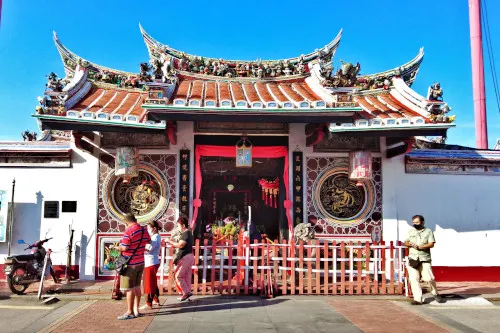
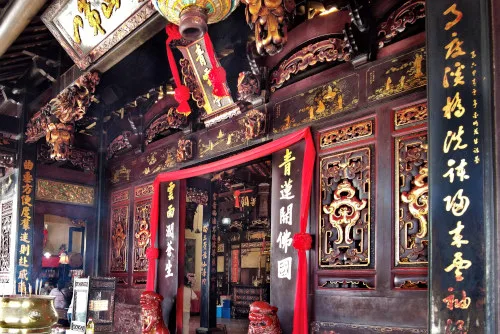
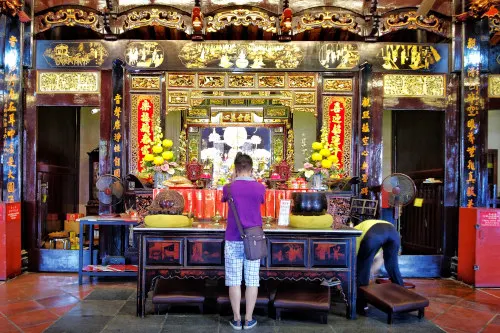
- Opening Hours: 7:00 am – 5:00 daily
- Address: 25, Jalan Tokong, Kampung Dua, 75200 Melaka
- Tel: +606-282 9343
- Entrance fee: Free, and dressing appropriately is recommended
2. Sri Poyyatha Vinayaga Moorthy Temple and Masjid Kampong Kling
A city with diverse cultures, Malacca is multicultural, where everyone lives side by side harmoniously. The area around Jalan Tokong is called ‘Harmony Street’ because the Chinese Temple, the mosque, and the Hindu Temple co-exist closely.
Masjid Kampong Kling is just a minute's walk from Cheng Hong Teng temple. This mosque was built by Indian Muslim traders in the 18th century and had a minaret with a pagoda-like rooftop. The architectural design of the mosque is a cross between Chinese, Hindu, and Malay. The pagoda-like rooftop can easily be mistaken for a Chinese building.
Not far away is the Sri Poyyatha Vinayaga Moorthy Temple, one of the oldest Hindu temples in Malaysia, built in the 18th century.
You immediately feel the diversity, tolerance, and acceptance of all races permeating the air while visiting the mosque and the neighborhood temples.
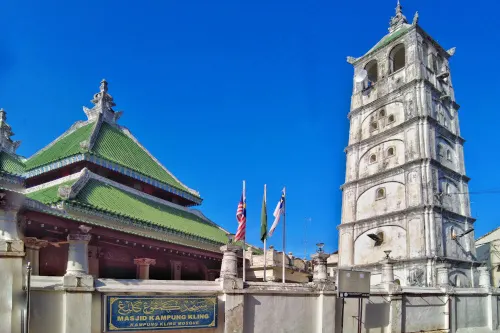
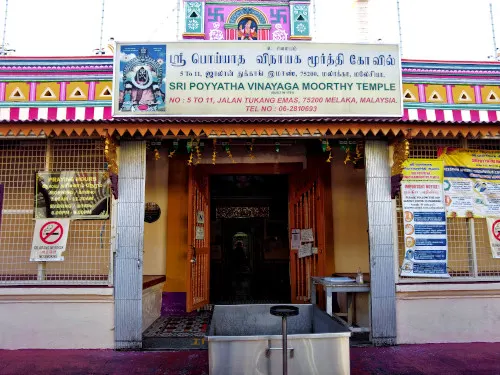
3. Admire the old architecture at Jonker street, Melacca
We walked toward the Malacca riverbank in the evening, passing many historical buildings in the Jonker Street area. Malacca's trip is incomplete if you do not visit Jonker Street.
The grand gate of the street welcomes us with the Chinese New Year vibe (we came here just two weeks before the Chinese New Year). However, numerous buildings with European, Malay, and Chinese cultures date back to the 17th century once you enter the street.
When we meandered through the narrow side lanes, more cute small cafes and traditional buildings were a great treat to my camera lenses.
These shops typically have square shape windows arranged symmetrically, with a fanlike design on the top part. Two pilasters are in front of each shop, some with beautiful carvings. The roof usually comes with floral ornamentation and heavy cornice. One such prominent building is now converted into the Baba and Nyonya Museum.
I was more thrilled by the architecture of the old buildings than the souvenir store. But, if you are interested, make sure you come here when the sun goes down on Saturday nights and Sundays to visit the Jonker Walk night market. The street is the haven for shoppers who immerse in the bargaining atmosphere, with everything from souvenirs, clothing, and jewelry, to various local delicacies offered at the food stalls.
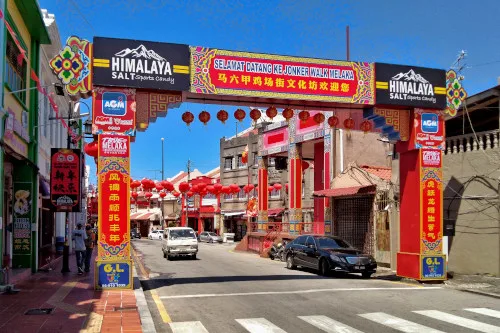
The Baba Nyonya Heritage Museum
The Baba and Nyonya Museum showcases the richness of the culture and life of the pre-WW2 Peranakan homes. The museum was the house of the Chan family, which turned into a museum in 1985.
Photography is not permitted inside the museum. However, it is worth paying a small entrance fee to admire the opulence of the house of the renowned Peranakan family.
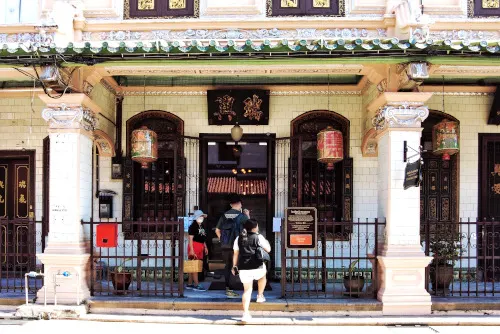
- Opening Hours: 10.00 am to 5 pm daily
- Address: 48-50, Jalan Tun Tan Cheng Lock, 75200 Melaka
- Tel: +606-282 1273
- Entrance fee: RM16 for adults (guided tour)
4. Stroll along the riverbank of the Malacca river
We strolled along the Malacca River Walk in the evening, an ideal way to see the historical city of Malacca. Numerous landmarks are nearby, with endless Instagram-worth spots to take pictures. It was great to spend a late afternoon here when the sun was no longer blistering hot.
There are many murals on the old buildings on both sides of the river.
One of the best things you can do is to rest at one of those whimsically-named hipster cafes on the promenade, admiring the street art and graffiti.
You can also see the imposing facade of the Church of St. Francis Xavier, built in the 19th century.
Alternatively, you can take the Melaka river cruise that passes by those vivid murals and century-old bridges. Instead, we choose to take more time to stroll along the riverbank.
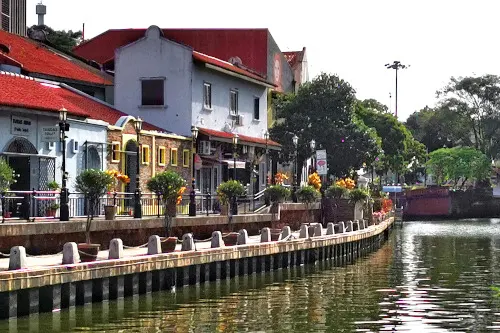
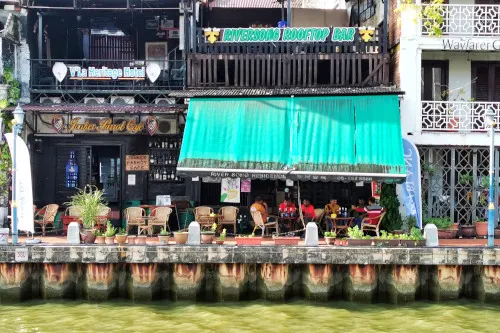
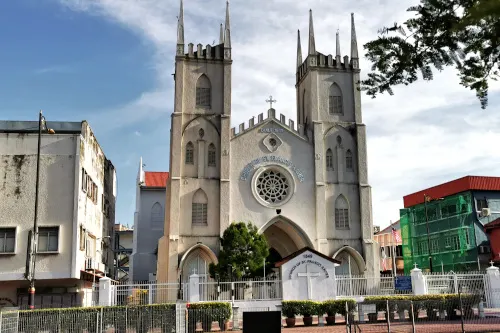
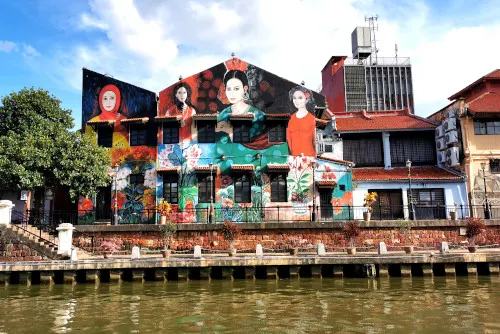
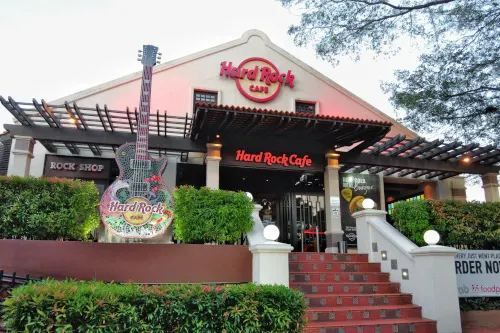
5. Visit the surrounding of Dutch Square
We cross the bridge from Jonker Street to the other side of the riverbank, which looks significantly different from the traditional Chinese architecture of Jonker Street. Here is where the Dutch Squares is, also called the Red Square, as most of the buildings have a crimson facade,
A. Christ Church
The main attractions are the Christ Church and Stadhuys. Christ Church was built from 1741 to 1753 by the Portuguese. It is Malaysia’s oldest Protestant church.
The building has tall, massive walls and columns, topped with a small arch that hangs a bell. The building is predominantly red, with the church's name and a big cross painted white. The church bears all the hallmarks characteristic of 18th-century Dutch architecture.
Christ Church was initially white but painted everything red to match the red buildings nearby when the British conquered Malacca.
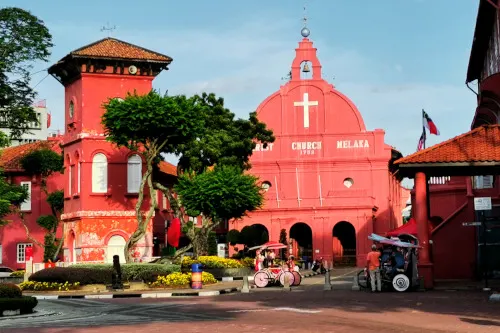
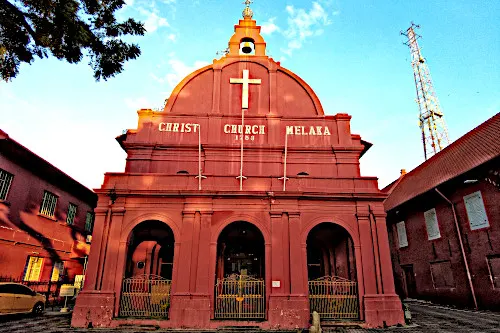
- Opening Hours: 9.00 am to 4.30 pm daily
- Address: Jalan Gereja, Bandar Hilir, 75000 Malacca
- Tel: +606-284 8804
B. Stadthuys
Besides the Christ Church is Stadthuys, a Dutch colonial-style architecture with massive walls, louvered windows, and doors with wrought iron hinges. It was built between 1641 and 1660 and is modeled based on the town hall of Hoorn in the Netherlands.
Stadhuys is an old Dutch spelling, meaning city hall, which was the office of the Dutch Governor.
The building has turned into the History & Ethnography Museum, which displays numerous traditional costumes, and artifacts, and showcases the customs and traditions of Malacca.
In front of Stadhuys is the Tan Beng Swee Clock Tower, built by the wealthy Straits Chinese family, but it looks distinctively Dutch.
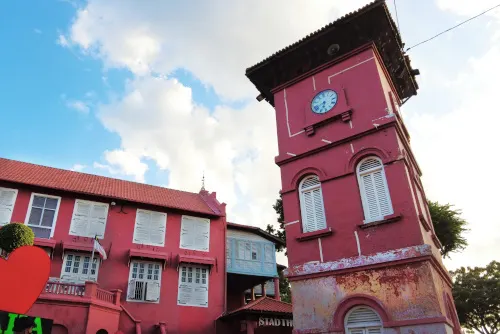
C. Water fountain, trishaw, and stores
In front of Stadhuys and Christ Church is Queen Victoria's Fountain, built to commemorate the Diamond Jubilee of Queen Victoria in 1901. It stands elegantly as ever and is one of Malaysia's last traces of the British colonial era.
There were also plenty of colorful trishaws in front of Stadhuys. However, I felt a bit kitschy and too touristy, so I decided to skip it and go to nearby souvenir shops. Each trishaw is decorated with different themes and blasting loud music as they pedal the passengers around. It can be fun, especially with kids.
You can pick up some souvenirs and some local handicrafts. Most of the items are reasonably priced but still have room to bargain.
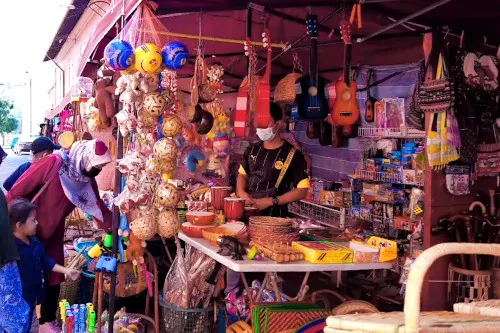
6. St. Paul’s Church
We walked up to St Paul’s Hill, behind the Dutch Square.
St. Paul’s Church is right on the top of the hill. It was built by the Portuguese in 1521, dedicated to Virgin Mary, and is the oldest church in Malaysia. The church remained in use until the Christ Church was built.
The stones featured inside the church have old Dutch text on them. These plaques are the tombstones erected back in the 17th century.
There is a statue of St Francis Xavier in front of the church. He established the first modern school in Malacca and used it for missionary work. The statue was built in 1952.
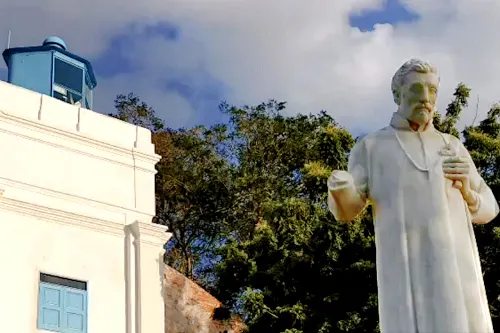
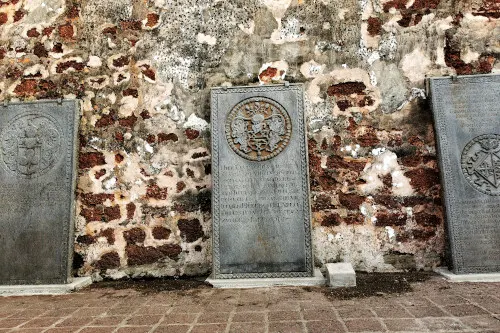
7. Flora de la Mar Maritime Museum
There are a few museums near Dutch Square, and we choose to visit the maritime museum only due to our tight schedule. It is just a short walk from Dutch Square along the riverbank.
The museum is housed in a replica of Flor de la Mar, a Portuguese ship that sank off the Straits of Malacca in 1511.
The museum is about the trading activities and seafaring history of Malacca in the old days.
It displays exhibits, artifacts, ancient coins, and documents from the Portuguese era.
There is also an abundance of model ships from different periods.
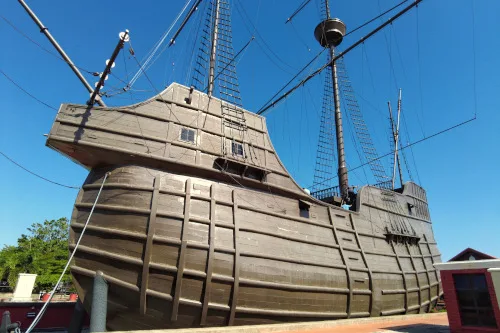
- Opening Hours: 9.00 am to 5.00 pm (closed on Monday)
- Address: Jln Merdeka, Bandar Hilir, 75000 Melaka
- Tel: +606-282 6526
- Entrance fee: RM3 for adult
8. Visit Kampong Morten and the Portuguese Settlement
On the following day, we visited Kampong Morten, a historical traditional Malay village in the city dating back to the 1920s. The village has more than one hundred traditional Malay houses, and most have been upkeep.
The village is near the Malacca River. You can do a riverbank walk from the Dutch Squared to this far or drive here within minutes.
We were told there is a guided tour, but it is only for a specific time slot.
So we decided to walk around the village, admiring the colorful wooden Malays houses. Some of them have turned into cafes and homestays for visitors.
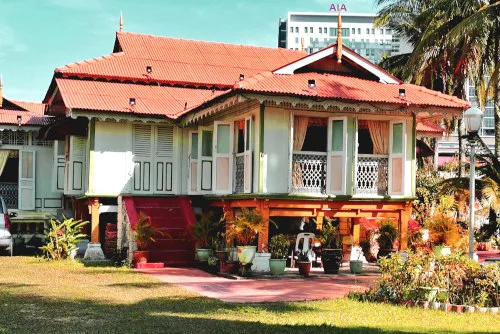
The Portuguese settlement is the home of the Kristang people, an ethnic group with mixed Portuguese and Malay heritage. We came here in the morning, but there was nothing to see. There is a square (Medan Portugis) with some restaurants, but they are not open now. Therefore, it is better to visit this place during Christmas when it is full of plenty of activities and performances.
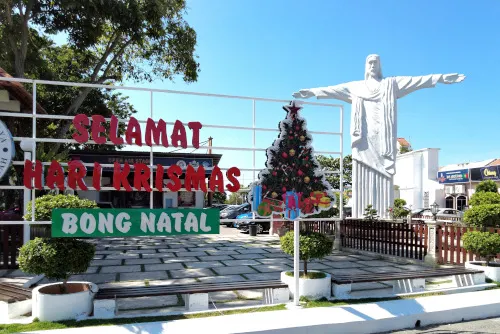
9. Savor the local food in Malacca
Malacca is also a gastronomical haven with a wide variety of specialty food. We have tried a few which are unique and delicious. Our Malacca friend hand-picked some stores for us. Some foods are famous, and others are only available in Malacca!
Nyonya Cuisine
Nyonya cuisine is from the descendants of Chinese migrants who married the local Malay. We chose to visit Amy Heritage Nyonya Cuisine, recommended by friends. These dishes are the amalgamation of Chinese and Malay cooking. We ordered Nyonys mixed vegetables, Ponteh chicken, their famous Pie Tee, and Nyonya laksa.

Specialty burger
Burgers do not originate from Malacca, but Baboon House serves delicious burgers.
We ordered a burger with tender pork chops instead of a beef patty and served with watermelon cubes on the skewer! From the perspective of a restaurateur myself, it is a place not to be missed as long as they can maintain the standard.
We did not encounter baboons after all. Instead, we thought we had entered the house of a wealthy Chinese family. There is antique furniture and art display on the wall, and you can only review its sitting area after crossing into the middle section of the shop.
There is eclectic furnishing, mainly decades-old solid wooden tables, and chairs, with various paintings and crafts hanging on the wall. So you can sit back to relax and pick a book to read from its extensive collection after trudging through the narrow lane under the scorching heat.
Surprisingly, there is even a well in the open-air courtyard.
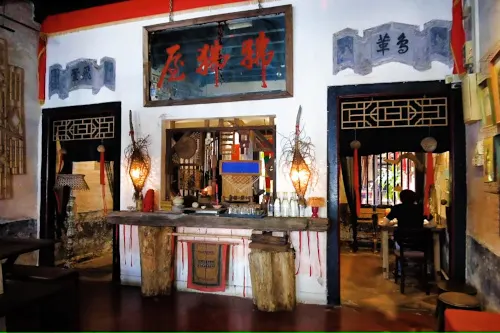
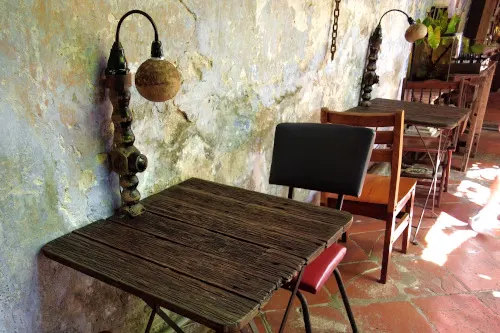
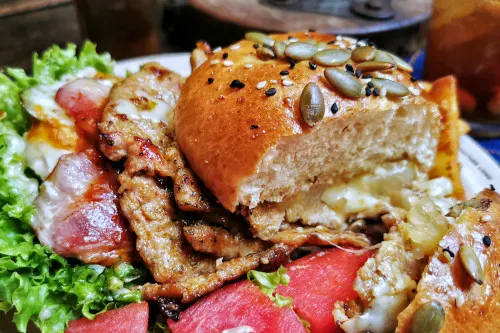
Coconut shake
We head to Klebang Original Coconut Shake to have the freshest coconut shake. You can find coconut cake in every nook and corner of Malacca, but this store is the most famous one. They have a constant flow of customers, churn out the shredded coconut and juice, and add directly to the ice. It is a great place to enjoy the freshest possible coconut shake, although it takes about ten minutes of driving distance from the town.
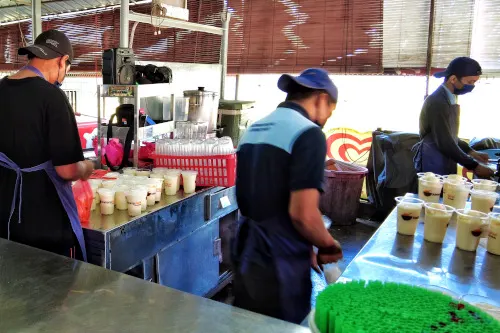
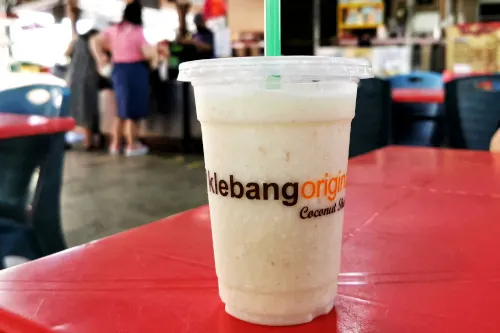
Satay celup
Ban Lee Siang is one of the oldest satay celup restaurants in Malacca.
Don’t miss out on trying satay celup in Malacca, as you will unlikely find this fantastic food elsewhere. This street food is meat, seafood, and vegetables on a skewer cooked in a boiling satay sauce (spicy peanut sauce).
Nyonya kueh
Nonya kueh (bite-sized snack/dessert) is famous in Malacca. Baba Charlie Nyonya Cake has a massive collection of kueh. These are bite-size sweet desserts, which use palm sugar primarily to sweeten them.
Their cendol is the best choice to quench your thirst and pair with the kueh.
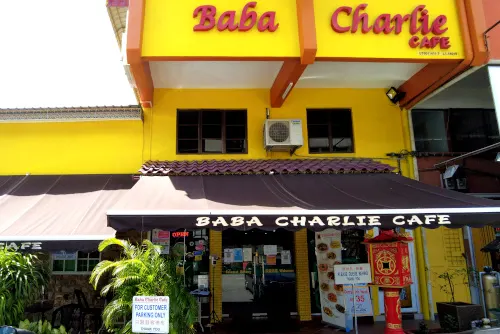
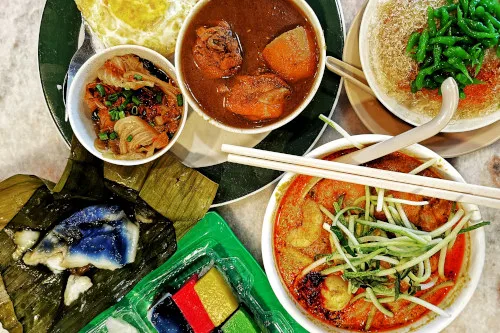
Chicken rice balls
After shopping at Jonker Street, we had lunch at Chung Wah Chicken Rice Ball.
The rice is compressed and shaped like a golf ball, which is unique. Many stores sell chicken rice balls on Jonker street. It tastes like Hainanese chicken rice in Kuala Lumpur, with a different presentation. Do try chicken rice balls at this shop before continuing your sightseeing and shopping
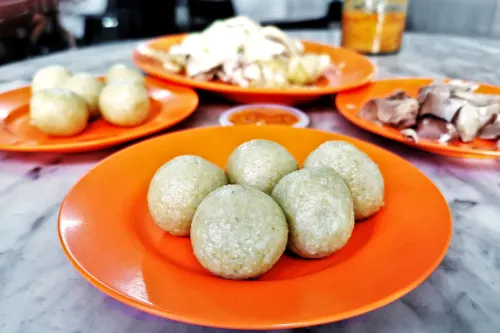
10. Other interesting places worth visiting in Melaka
- The Hang Li Poh's Well (also known as King's Well) is the oldest water well in Malaysia.
- We dropped by Taman Mini Malaysia and Mini ASEAN at Ayer Keroh on the way back to Kuala Lumpur from Malacca, about half an hour's drive from the center of Malacca city. The park offers you the opportunity to visit the replicas of traditional houses of all 13 different states in Malaysia, with their respective characteristics. Unfortunately, part of the park was under refurbishment during our visit, so we could only enter a few houses to glimpse each state's furnishings, fixtures, handcraft, and arts. Hopefully, the refurbishment work will complete soon as many houses are poorly maintained.
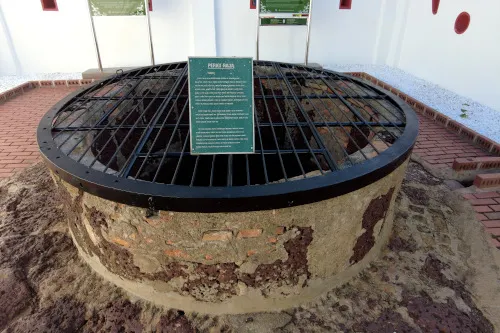
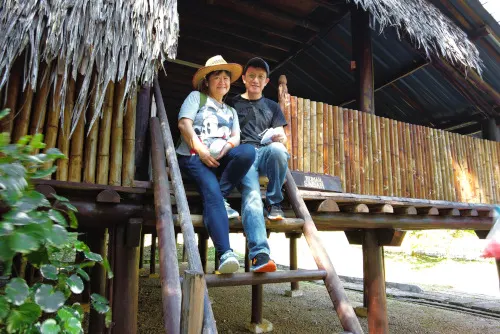
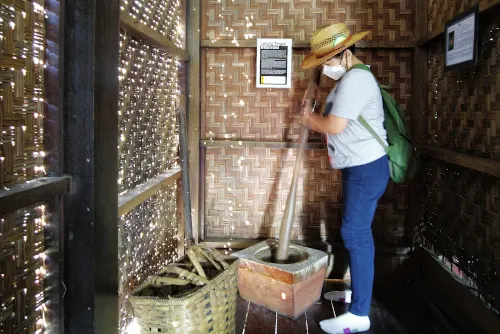
We managed to visit the most popular tourist destinations but missed a few. (You should add these to your Malacca itinerary.
- The Menara Taming Sari stands 110 meters above the ground, with a revolving tower rising to 80 meters. It is the ideal place to have a panoramic view of Malacca 360 degrees. The tower is only five minutes from the maritime museum and within walking distance from Dutch Square. Unfortunately, it was under maintenance during our visit. You can include a city viewing of the tower in your itinerary.
- We also did not go to the A Famosa fort as time is not permissible, although it is just at the back of St. Paul Church.
- Melaka Straits Mosque is a floating mosque located on the man-made Malacca. It is best to visit in the evening, especially during sunset.
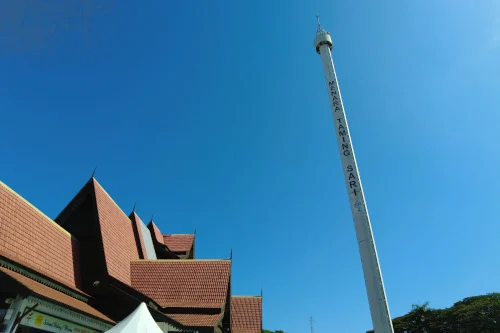
We stay at Liu Men Hotel
This article is incomplete without mentioning Liu Men Hotel. We picked Liu Men Hotel, among the best hotels in Malacca, rated at Agoda.com. It caught our attention as we read that it is an 80-year old building turn boutique hotel,
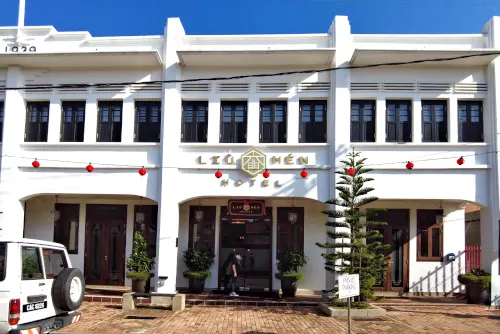
Our room comes with dark brown timber flooring and mahogany furniture with a rustic feeling. The bed is lit with ceiling-hung lantern-shaped lighting.
The bathroom is white-tiled and black-countered, which is bright and cozy.
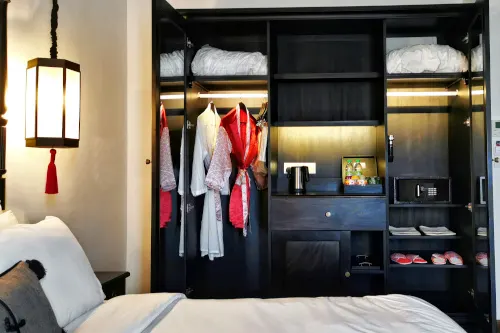
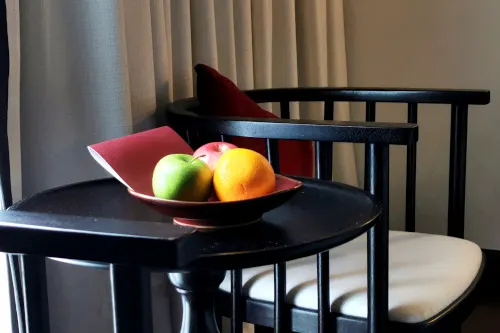
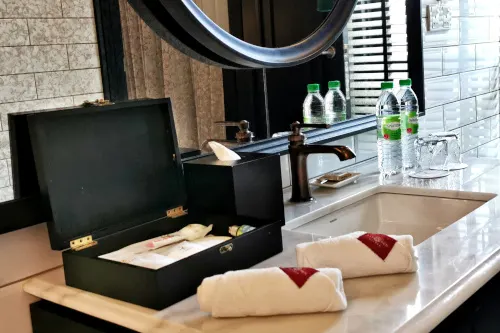
The courtyard is neo-traditional Malaccan style and is where the breakfast was served.
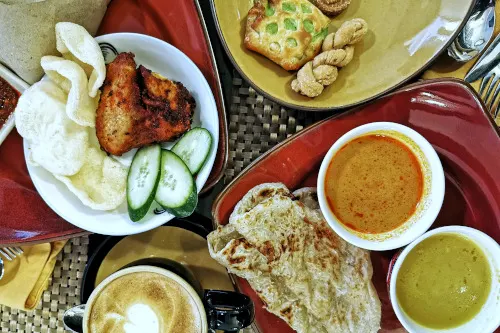
The spiraling flight of a wrought iron staircase takes the prime spot, a functional stair leading to the first floor.
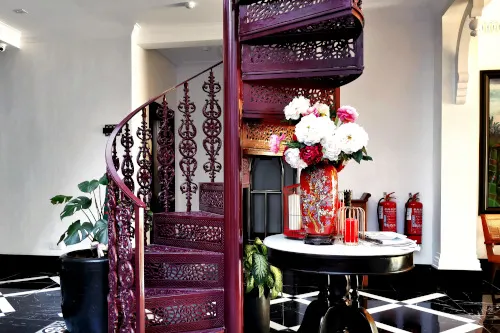
The furniture captures the essence of Peranakan culture, with vivid shapes and colors matching perfectly with its quaint yet stylized interior.
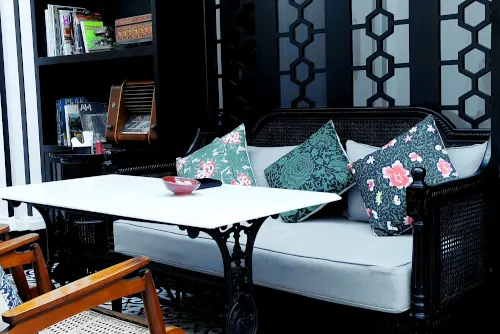
Watch how we spent 3D2N in Malacca
If you have come so far reading this blog post, don’t miss out on the video we shot during our stay in Malacca. Click the image below to watch on YouTube (shot in high definition!).
Other best places you should visit in Malaysia
You may also want to read about other noteworthy places in Malaysia. Here are two places we have visited lately.
- Taman Negara Malaysia (National park of Malaysia.) We had a great adventurous trip there at the end of last year.
- If you like island resorts, check out our 3D2N trip to Pangkor Laut Resort, on a private island. It is one of the most luxurious island resorts in Malaysia.

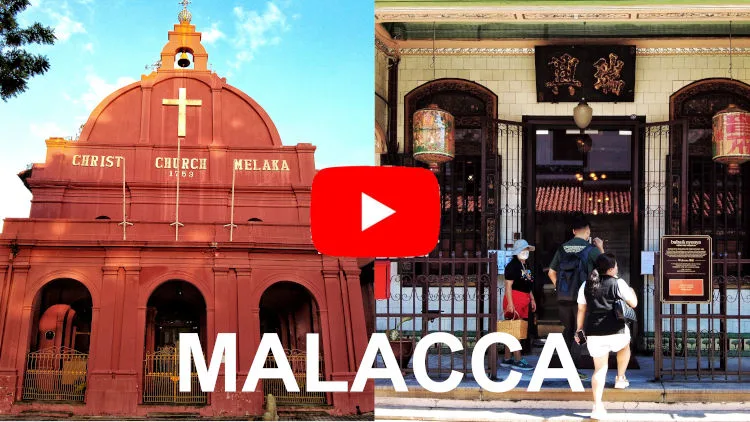
Ekhtiar
Friday 7th of June 2024
Thank you for this wonderfully detailed and insightful guide to Malacca! Your vivid descriptions and historical context really bring the city to life. The sections on Cheng Hoon Teng Temple and Jonker Street were particularly fascinating and made me nostalgic for my own visits. It's always a pleasure to see how others experience this vibrant city. If anyone's looking for even more things to do in Malacca, I recently wrote a guide that covers some additional spots and activities: https://focaljourney.com/things-to-do-in-malacca/. Keep up the great work, and I look forward to reading more of your adventures
Esther
Saturday 18th of November 2023
Next time I am in melaka am definitely gonna try the burger & satay celup!